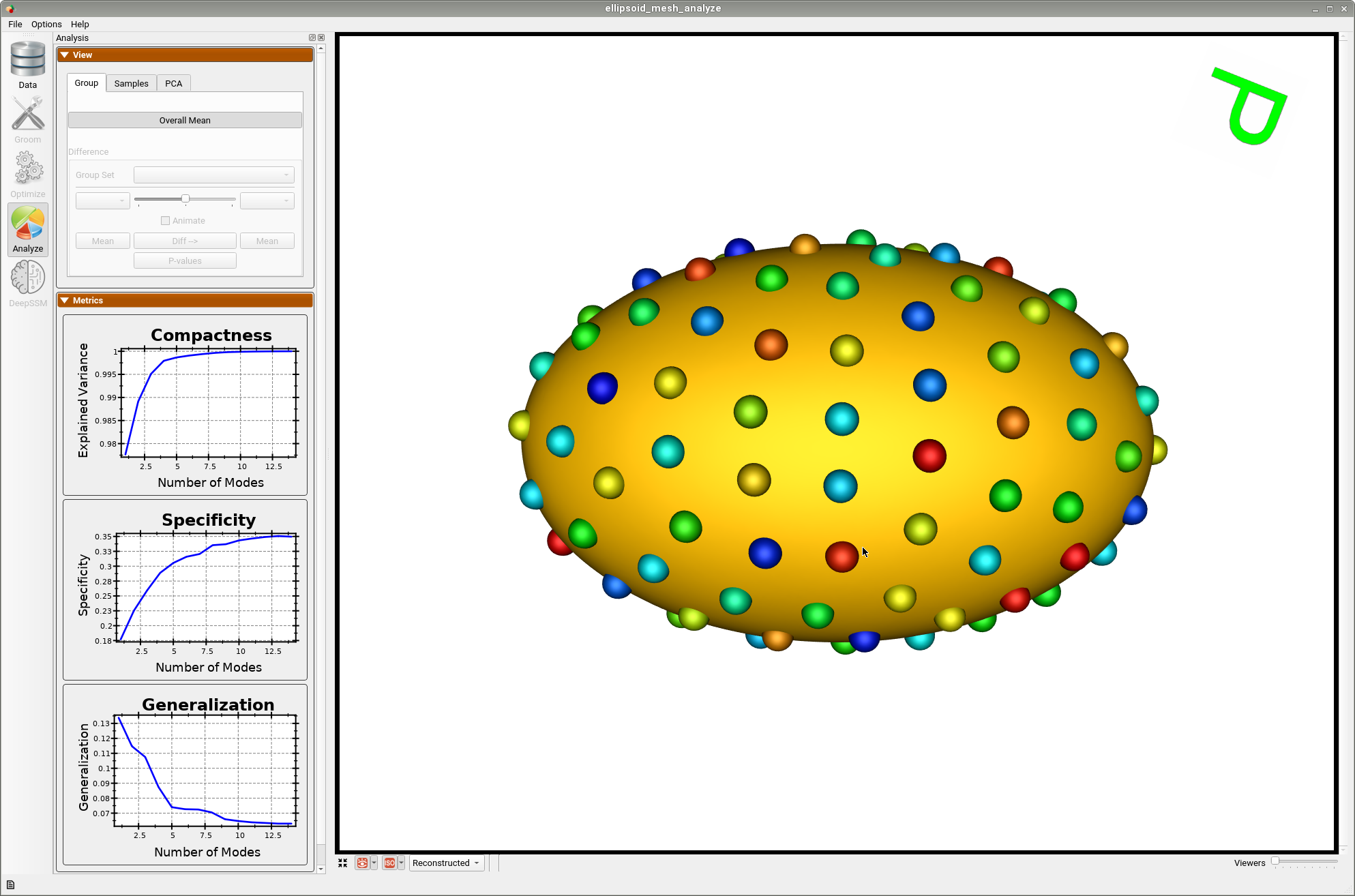Ellipsoid Mesh: Basic Example
What is the Use Case?
The ellipsoid_mesh use case uses the same dataset as the ellipsoid use case, but optimization is done on meshes rather than distance transforms. The dataset comprises of axis-aligned ellipsoids with varying radii along the x-axis. The ellipsoid_mesh use case represents the standard use version of a shape modeling workflow from meshes using ShapeWorks.
Grooming Steps
This is how the meshes in the dataset look before grooming. The ellipsoids have random orientations.

- Remeshing: Meshes are remeshed to ensure uniform vertices.
- Reference Selection: The reference is selected by first computing the mean (average) mesh, then selecting the sample closest to that mean (i.e., medoid).
- Rigid Alignment: All of the meshes are then aligned to the selected reference using rigid alignment, which factors out the rotation and remaining translation.
The ellipsoids are now aligned ready to be sent to the optimizer.

Relevant Arguments
--use_subsample --num_subsample --use_single_scale --tiny_test
Optimization Parameters
The python code for the use case calls the optimize command of ShapeWorks, which requires that the optimization parameters are specified in a python dictionary. Please refer to Parameter Dictionary in Python for more details.
Below are the default optimization parameters for this use case.
{
"number_of_particles": 128,
"use_normals": 0,
"normal_weight": 10.0,
"checkpointing_interval": 200,
"keep_checkpoints": 0,
"iterations_per_split": 500,
"optimization_iterations": 500,
"starting_regularization": 100,
"ending_regularization": 0.1,
"recompute_regularization_interval": 2,
"domains_per_shape": 1,
"domain_type": 'mesh',
"relative_weighting": 10,
"initial_relative_weighting": 0.01,
"procrustes_interval": 0,
"procrustes_scaling": 0,
"save_init_splits": 0,
"verbosity": 0
}
Analyzing Shape Model
Below is the mean shape reulting from optimization. Here we can see that there is only one major mode of variation.

Animating along the first PCA mode we can see the variation in the radius along the x-axis.
